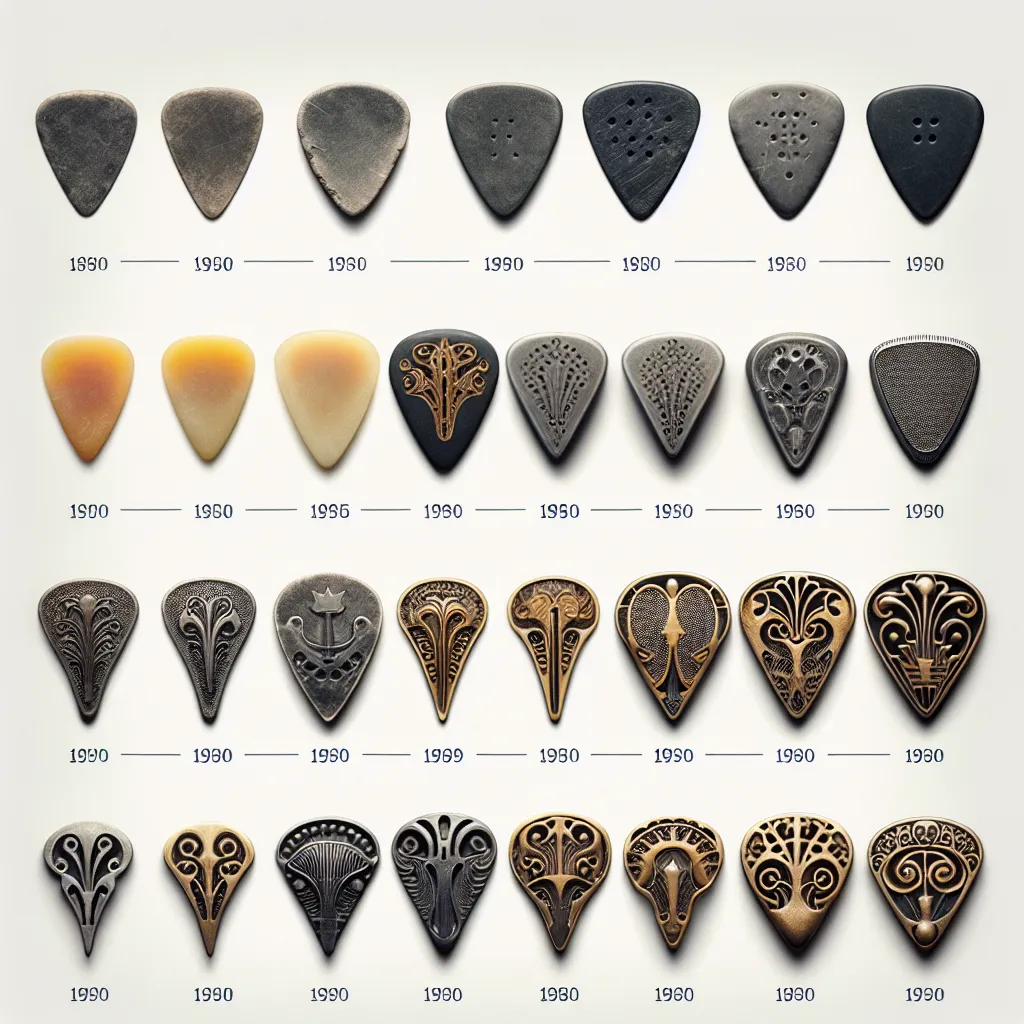The History and Development of Mandolin Picks
When exploring the history and development of mandolin picks, it becomes evident that these small yet crucial accessories have undergone significant evolution over the years. The earliest mandolin picks, also known as plectrums, were crafted from materials such as tortoiseshell, bone, and even wood. These picks were often handmade and varied in shape and size, reflecting the personal preferences of the musicians using them.
As time progressed, the industrial revolution brought about changes in the manufacturing processes, leading to the mass production of mandolin picks. This shift led to an increased standardization of picks, with the emergence of standardized shapes and materials such as celluloid and eventually modern plastics. The standard teardrop shape of mandolin picks became widely popular due to its versatility and ergonomic design.
Furthermore, the development of different pick thicknesses and textures allowed musicians to customize their playing experience, catering to various playing styles and musical genres. Notably, the introduction of textured picks provided enhanced grip and control, particularly beneficial for intricate mandolin playing techniques.
In contemporary times, the evolution of mandolin picks continues, with the utilization of advanced materials such as polymers and composite blends, further refining the durability and tonal qualities of picks. Moreover, innovative designs incorporating beveled edges and asymmetrical shapes aim to optimize the interaction between the pick and the mandolin strings, resulting in improved articulation and tonal clarity.
Overall, the history and development of mandolin picks showcase a fascinating journey marked by innovation and adaptation, mirroring the evolving needs and preferences of mandolin players across different eras.
Innovations in Mandolin Pick Materials and Designs
One of the most intriguing aspects of the evolution of mandolin picks lies in the innovations in materials and designs. Over the years, we have witnessed a significant shift in the materials used to craft mandolin picks, as well as the innovative designs that have emerged to meet the diverse needs of mandolin players.
Traditionally, mandolin picks were crafted from materials such as tortoiseshell, ivory, and wood. However, with environmental concerns and the need for more durable materials, modern mandolin picks are commonly made from materials such as celluloid, Delrin, and various types of plastics. These materials offer greater durability, consistency, and versatility, allowing mandolin players to explore a wide range of tones and playing styles.
Furthermore, the designs of mandolin picks have also evolved to cater to the specific demands of players. From the traditional teardrop shape to the more contemporary shapes with intricate grip patterns, mandolin picks are now available in a plethora of designs to provide players with enhanced comfort, control, and precision during performances.
As players continue to seek new tonal possibilities and ergonomic solutions, manufacturers are continually pushing the boundaries of innovation in mandolin pick materials and designs. This evolution not only showcases the adaptability of mandolin playing but also highlights the dynamism of the instrument and its accessories in the modern music industry.
The Influence of Mandolin Pick Evolution on Playing Techniques
Exploring the evolution of mandolin picks not only sheds light on the history of this beloved instrument, but also highlights the significant influence of these changes on playing techniques. The transformation of mandolin picks over time has directly impacted the way musicians approach their instruments, leading to the development of new styles and the refinement of traditional playing methods.
Early mandolin picks, often crafted from materials like tortoiseshell, gut, or wood, provided a softer and more mellow tone. As picks evolved to incorporate materials such as metal and plastic, the sound of the mandolin became brighter and more articulate, altering the dynamics of playing. The advent of different pick shapes and thicknesses allowed players to experiment with diverse sounds and techniques, thereby expanding the expressive potential of the instrument.
Notably, the evolution of mandolin picks has influenced the development of playing techniques such as tremolo, cross-picking, and even percussive strumming. Thicker, stiffer picks have enabled musicians to execute rapid tremolo patterns with precision, while the adoption of more pointed picks has facilitated intricate cross-picking styles, adding depth and complexity to mandolin performance.
Furthermore, the incorporation of mandolin picks with a textured grip or added beveling has enhanced players’ ability to control dynamics and articulation, empowering them to explore a wider range of tonal possibilities. This evolution has encouraged mandolinists to push the boundaries of their instrument, fostering innovation and creativity in their playing.
In conclusion, the evolution of mandolin picks has profoundly impacted playing techniques, shaping the expressive capabilities of the instrument and inspiring the exploration of new musical frontiers. By understanding the historical development of mandolin picks and their influence on playing styles, musicians can appreciate the rich tapestry of possibilities offered by this iconic instrument.




